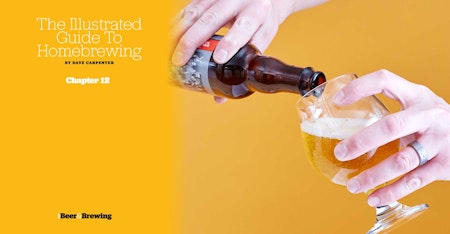Dine-in-the-dark restaurants such as blindekuh (Basel and Zürich) and Dans le Noir (London, Paris, St. Petersburg, and Barcelona) have achieved international fame for gustatory experiences in which guests are denied the pleasure of looking at their meals. Aficionados claim that limiting the diner to flavor, aroma, texture, and sound enhances one’s enjoyment of each course. Detractors say the whole thing is nothing more than marketing.
I’ll try anything once, but it’s undeniable that we eat with our eyes before we tuck into what lies before us. And it’s no different with beer. Before we even sniff that snifter, we’ve already made judgments (some conscious, others not) about the beer in the glass. And one of the first things we notice is clarity.
Some beers are meant to be cloudy. There are, of course, the obvious examples such as wit and Weiß, but even a heavily dry hopped double IPA can take on a hazy visage thanks to all of those hop-derived organoleptic substances. But what about a hazy helles or an opaque amber? Sometimes it’s a flaw, and here’s how it could happen.
You have a good, old-fashioned case of chill haze.
Chill haze is a condition in which malt-derived tannins and proteins clump together at cold temperatures (I like to think they’re trying to keep each other warm) and render a beer cloudy. The haze is harmless, and once the beer warms up a little, it’ll go away. The solution? Make sure you have a nice, rolling boil, followed by rapid cooling to pitching temperature. Kettle finings such as Irish moss and Whirlfloc can aid the process.
Your mash didn’t fully convert.
Mash enzymes quite effectively convert long-chain starches into simpler sugars, but they need enough time at the right temperature to do their work. Prematurely ending the mash or mashing outside the range in which alpha and beta amylase work their best can leave residual starches floating in your beer. Next time, conduct an iodine test to make sure the mash has fully converted.
You poured the whole bottle into the glass.
That last bit of beer at the bottom of the bottle really should stay put except in rare exceptions such as Hefeweizen. Take care to decant all but the last ounce or so of beer, and your glass will sparkle. Many homebrewers who take up kegging discover that the clarity of our beer improves dramatically because the keg stays cold and stays put.
You used a low-flocculent yeast strain.
Some strains drop out of suspension more readily than others. Switching to a more flocculent variety will help, but make sure you’re not sacrificing attenuation for the pleasure of clearer beer: Sometimes a highly flocculent strain will drop before it has finished fermenting the wort!
Hazy beer is rarely a big deal, and it’s usually more cosmetic than catastrophic. But if you find that your homebrew is consistently cloudy, looking into one of these common culprits may just point you along the path to clarity.








